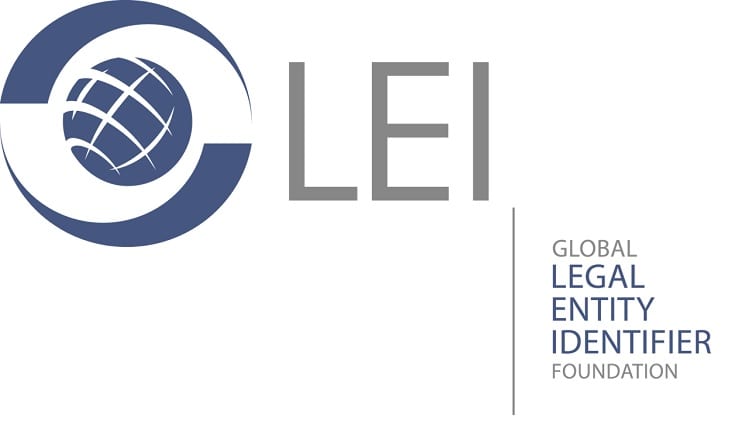CySEC financial regulator CySEC has issued a circular regarding the requirement for regulated companies to acquire an LEI number, before EU MiFID II rules kick in on January 3, 2018.
What is an LEI number?
LEI, or Legal Entity Identifier, is a unique identifier for persons that are legal entities or structures including companies, charities and trusts.
The Legal Entity Identifier (LEI) is a 20-character, alpha-numeric code, to uniquely identify legally distinct entities that engage in financial transactions.
As a part of MiFID II, all legal entities that trade with an EU-licensed broker need to be identified by their LEI.
The full text of the circular issued by CySEC follows:
TO: Issuers
FROM: Cyprus Securities and Exchange Commission
DATE: September 20, 2017
CIRCULAR NO.: C237
SUBJECT: Acquisition of a Legal Entity Identifier (‘LEI’)
The Cyprus Securities and Exchange Commission (‘the CySEC’) wishes, with this circular, to inform the issuers on the requirement to acquire a LEI which is necessary for the implementation of transaction reporting under the Regulation (EU) No 600/2014 on markets in financial instruments (‘MiFIR’) and market abuse surveillance activities under the Regulation (EU) No 596/2014 on market abuse (‘MAR’).
More specifically:
1. LEI is a 20-digit alphanumeric code that it connects to key reference information that enables clear and unique identification of legal entities participating in financial transactions.
Information on LEI, including answers to frequently asked questions, can be found on the Legal Entity Identifier Regulatory Oversight Committee (LEIROC) and Global Legal Entity Identifier Foundation (GLEIF) websites.
2. MiFIR and MAR requires issuers to acquire a LEI in order for the trading venues (‘TVs’) and systematic internalisers (‘SIs’) to be able to provide their competent authorities with identifying reference data with regards to financial instruments admitted to trading or traded on their systems.
3. The regulatory framework governing the abovementioned requirements is the following:
i. Article 27 of of MiFIR provides that TVs must provide their competent authorities with identifying reference data relating to financial instruments admitted to trading or traded on their systems.
In addition, the same article provides that SIs must provide their competent authorities with reference data of the following instruments that are traded on their systems:
Financial instruments where the underlying is financial instrument traded on a trading venue.
Financial instruments where the underlying is an index or a basket composed of financial instruments traded on a trading venue.
ii. Article 4 of MAR requires markets operators of TVs to notify their competent authority of any financial instrument for which a request for admission to trading on their trading venue is made, which is admitted to trading, or which is traded for the first time.
Notifications shall include, among others, the names and identifiers of the financial instruments concerned.
iii. Article 3(2) of the Commission Delegated Regulation 2017/585 requires that TVs and SIs shall ensure that the issuers of financial instruments which are admitted to trading or traded on a TV or for which a request for admission to trading has been made, have obtained a LEI.
iv. Article 1 of the Commission Delegated Regulation (EU) 2016/909 and Article 2 of the Commission Implementing Regulation EU 2016/378 require the TVs to notify their competent authority with the LEI of the issuer of the financial instruments concerned.
4. In the context of providing assistance, ESMA issued a relevant Q&A (Question 2) on 3 April 2017 as regards to the actions that should be taken by the TVs or SIs in the cases where the LEI of the issuer cannot be obtained.
In particular, ESMA advises the TVs and SIs to inform the issuers pertaining to the financial instruments concerned of their obligation to obtain the LEI of the issuer of every financial instrument in order to comply with the abovementioned requirements. In addition, ESMA advises TVs and SIs that the GLEIF has introduced the concept of ‘Registration Agent’. This facility will enable TVs and SIs to assist the issuer applying for the LEI to access the network of LEI issuing organisations.
5. It is mentioned that the Cyprus Stock Exchange (‘CSE’) has proceeded to an agreement/cooperation with the London Stock Exchange (LSE)/Unavista, for issuing of LEI to interested legal entities, including Issuers. The CSE provides to interested legal entities the ability to acquire a LEI code with the Assisted Registration process. Further information on this service, can be found on CSE website.
6. Further information regarding the identifying reference data relating to financial instruments is provided in CySEC’s circular C235 ‘Identifying reference data relating to financial instruments’ which it was issued on September 15, 2017.
7. CySEC urges all issuers to acquire a LEI as soon as possible in order the transaction reporting requirements to enter into force as of 3 January 2018. It is stressed that the submission of the identifying reference data relating to financial instruments, to ESMA, has started since July 2017.
Sincerely
Demetra Kalogerou
Chairman Cyprus Securities and Exchange Commission
